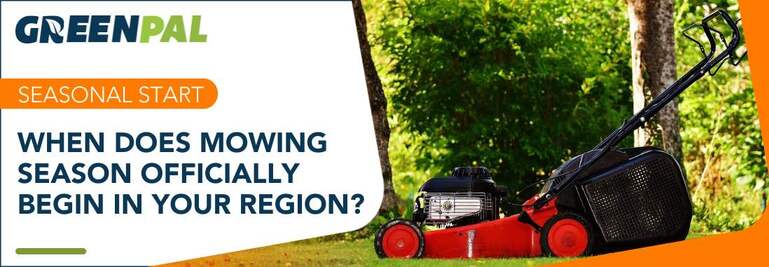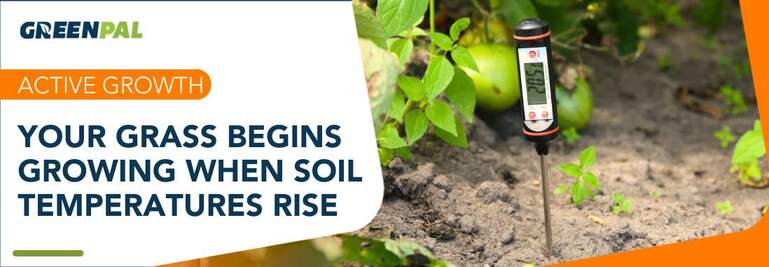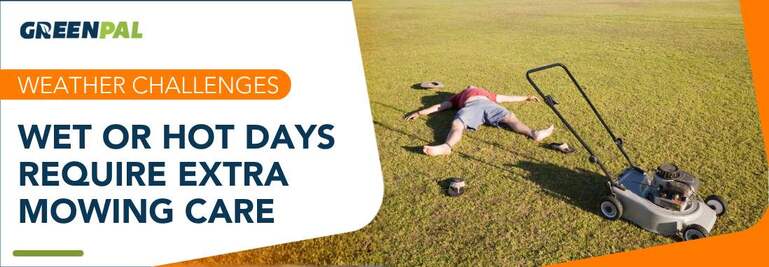When Mowing Season Starts Where You Live: A First-Mow Guide for 2025

The first cut of the year can get your lawn on the right track for the rest of the mowing season. Start too early and you risk scalping or stressing grass that isn’t ready. Wait too long and you’ll be fighting overgrown patches that never recover evenly. The challenge is that no two regions and no two lawns follow the same schedule. That’s why the best approach combines local climate data, soil temperature checks, and a close look at how your lawn is growing.
In this guide, we’ll walk you through the signals that tell you it’s time, regional timelines you can use as a baseline, and a practical checklist to make sure your first mow sets you up for success in 2025.
What Signals Tell You It’s Time
Three simple checks take the guesswork out of when to mow: freeze timing, soil temperature, and grass height.
Your local last-freeze window has passed
NOAA’s last-freeze map is the best starting point. It shows the average date when the chance of dropping below 32°F falls under 50%. For example, Chicago’s typical last freeze is around April 21, while Denver averages closer to May 5. Depending on elevation or proximity to water, your own lawn may be earlier or later. Always check the nearest NOAA station rather than relying on statewide averages.

Your grass type is actively growing
Soil temperature determines when lawns wake up. Cool-season grasses like fescue and bluegrass start growing once soils hold steady in the 50–65°F range. Warm-season grasses such as Bermuda, Zoysia, or St. Augustine need about 65°F before growth really kicks in. A cheap soil thermometer tells you all the information you should know about whether your grass is actively growing or still dormant.
The grass is tall enough for a clean cut
Even if freezes have ended and soil temps are right, your lawn should be tall enough to handle the one-third rule. If your mowing height is 3 inches, wait until grass is around 4.5 inches before the first pass. Cutting too short at the start of the season shocks the turf and slows recovery.
Quick Regional Expectations
Use these regional timelines as general starting points, but always double-check because local factors like elevation, shade, and urban heat can shift the timing by weeks.
Gulf / South Atlantic: Early March in many areas; frost-free coastal spots may kick off even sooner. See lawn care in Tampa
Southern Interior & Mid-Atlantic: From late March into April. Check out lawn mowing in Charlotte
Midwest & Northeast: Typically April through early May. Explore lawn services in Chicago
Rockies, High Plains & Upper Midwest: Usually late April to May, with some high-elevation areas waiting until June.
Pacific Coast: Coastal zones often start in March; inland valleys follow a week or two later.
These are just ballpark ranges. Microclimates, like shaded backyards or urban heat islands, can shift your lawn’s actual timing. Always reference your local NOAA station for the most accurate guidance. If you’re unsure, you can always get GreenPal quotes in under two minutes.

Your First-Mow Checklist
Once conditions line up, you can use this checklist to run through the most important things to know before taking out the mower. In addition, ensure your equipment is ready to avoid any damage the first time you head out.
Sharpen the blade. A clean cut helps grass heal faster.
Mow dry. Wet grass clumps, tears, and can clog equipment.
Set the right height. For cool-season lawns, 2.5–3.5 inches is ideal. For Bermuda and other warm-season grasses, aim for 1–2 inches depending on mower type.
Follow the one-third rule. Don’t remove more than a third of the blade in one pass.
Leave clippings. They recycle nutrients and don’t create thatch when you mow regularly.
Water wisely. If you irrigate, do it early in the morning with deep, infrequent cycles.
Warm-Season Lawn Specifics
Warm-season grasses demand patience. Wait until soil temperatures are consistently near 65°F before mowing. For the first cut, set your deck slightly higher than your summer target. Hold off on nitrogen fertilizer until soil temps also hit ~65°F at four inches deep — that way the nutrients match real growth. Pre-emergent treatments should go down before soils warm too much. If a sudden heat spell causes growth to stall, skip a cycle instead of mowing too low.
Cool-Season Lawn Specifics
Cool-season lawns often bounce back sooner, but the same principles apply. Start mowing once blades exceed your target height by a third. Stick with 2.5–3.5 inches as your base, and raise it by an inch in midsummer to buffer heat and drought. If spring rains push growth too tall before you can mow, reduce height in steps across two or three cuts rather than scalping all at once.

What to Do if It’s Wet or Hot
The weather doesn’t always cooperate. On wet days, wait for the grass to dry if possible. If you must mow, raise the deck and make two lighter passes at different angles to avoid tearing. During heat waves, mow less often, choose cooler times of day, and protect the crown with a higher deck setting.
How to Find Your First Mow Date in Less Than Two Minutes
The fastest way to plan is to use NOAA’s interactive freeze map. Just click your nearest station, note the average last 32°F date, and then confirm that your grass type is growing. Combine those two checks with the one-third rule on height, and you’ll know exactly when to roll out the mower.
All recommendations in this guide are based on NOAA’s 1991–2020 Climate Normals, National Weather Service data, and turfgrass research from leading university extensions.
Final Thoughts
The first mow of the year is about setting up your turf for a healthy season ahead. By using freeze data, soil temperatures, and grass growth rather than just flipping the calendar, you can save time, water, and frustration and enjoy a greener, stronger lawn all summer.
Let's remember, though, that not everyone has time to mow their lawn, and if you need a professional to do it for you, GreenPal can get you a quote today for a cut that could happen tomorrow. GreenPal lets you connect with multiple landscaping professionals in your area to book a single mow or get routine service to keep your yard looking healthy.
References: NOAA/NCEI U.S. Climate Normals and last‑freeze overview. (NCEI), NOAA Climate.gov interactive map of the average last spring freeze. USA‑NPN spring onset maps and data products. (USA National Phenology Network), Warm‑season growth and soil temperature thresholds. (USGA, UGA Extension), Cool‑season growth temperature ranges. (University of Minnesota Extension), One‑third rule and mowing dry. (Yard and Garden, Iowa State University Extension)





 Share
Share












